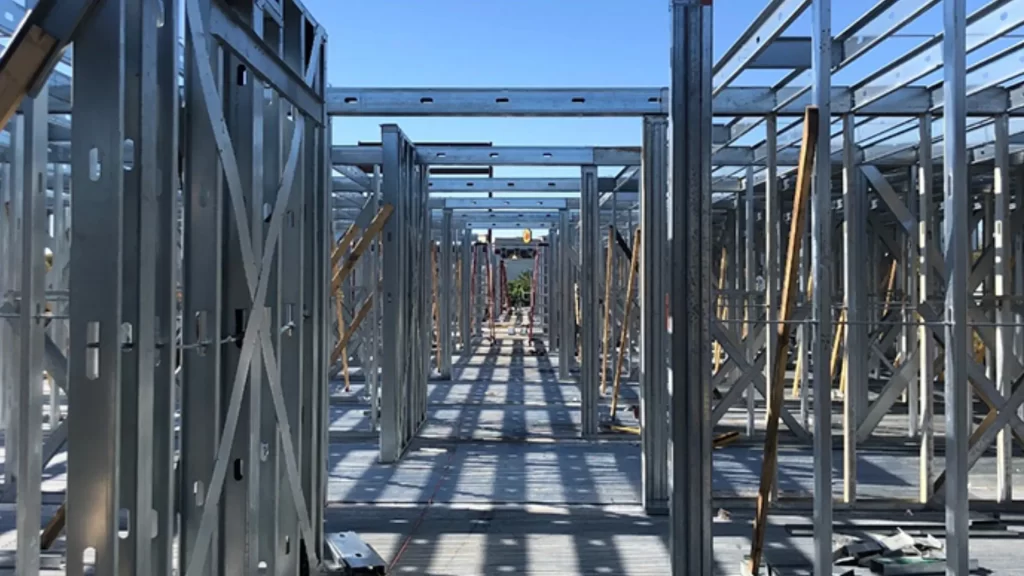Walls can be broadly categorized into two types: load-bearing and non-load-bearing. Understanding their distinct characteristics and functions is crucial when designing or renovating a space. Whether you’re a Carpenter reinforcing load-bearing structures or enhancing non-load-bearing aesthetics. We’ll explore the intricacies and unique differences to provide a clear understanding of what sets these walls apart.
Table of Contents
ToggleLoad-Bearing Walls: The Solid Foundation

Load-bearing walls are the unsung heroes of a building’s structural integrity. They bear the weight of the structure, ensuring it stands firm. Here’s a closer look at their defining features:
- Crucial Support: These walls serve as the architectural backbone, carrying the weight of the structure and transferring it to the ground.
- Built to Last: Load-bearing walls are constructed using robust materials such as concrete, reinforced masonry, or steel to endure the immense pressure they endure.
- Strategic Positioning: Their placement is strategic, aligning with the load distribution from the roof, floors, and any additional weight.
- Limited Openings: Load-bearing walls are typically designed with fewer doors and windows to maintain their load-bearing capacity.
- Complex Modifications: Making alterations to load-bearing walls is a complex endeavor, often necessitating structural adjustments with the use of beams, columns, or alternative support structures.
Common examples of load-bearing walls include the exterior walls of a building, walls directly beneath beams or trusses, and those situated directly above foundation walls.
Enhance your home improvement projects with this 5-in-1 Stud Finder Wall Scanner. Powered by an intelligent microprocessor chip and featuring an HD LCD display, it precisely locates studs, beams, and metal within load-bearing walls. Perfect for ensuring accurate placement and avoiding complexities when working on structural modifications. Upgrade your toolkit for robust construction and reliable results.
Non-Load-Bearing Walls: The Design Palette

Non-load-bearing walls, in contrast, serve a more flexible and creative purpose. They are not tasked with carrying structural loads but are indispensable for other reasons:
- Spatial Division: Non-load-bearing walls act as versatile spatial dividers, creating distinct rooms and zones within a building.
- Lightweight Construction: These walls are typically constructed with lighter materials such as wood studs, drywall, or lightweight concrete blocks, making them easier to work with.
- Ample Openings: Non-load-bearing walls can feature more extensive doors and windows, as they are not burdened with supporting the building’s weight.
- Ease of Modification: Altering non-load-bearing walls is comparatively straightforward, offering flexibility in room layout changes or design updates.
- Aesthetic Opportunities: Beyond functionality, non-load-bearing walls can be used for creative purposes, like decorative wainscoting or captivating accent walls.
Examples of non-load-bearing walls include interior walls that separate bedrooms, bathrooms, and closets, as well as walls used for aesthetic enhancements or as partitions within open-concept living spaces.
Enhance your creative projects with the DEWALT 8V MAX Gyroscopic Cordless Screwdriver Kit. Its precision and maneuverability make it perfect for working on lightweight construction and creative design updates for non-load-bearing walls. The kit includes one battery for reliable power, ensuring efficient and effortless screwdriving tasks. Elevate your DIY projects with the trusted performance of DEWALT.
Balancing Form and Function: Identifying Load-Bearing Walls Safely
Load-bearing walls and non-load-bearing walls are like the yin and yang of architectural design. One provides the structural support that keeps a building standing tall, while the other offers creative freedom and division within living spaces. Recognizing these differences is fundamental for constructing safe, aesthetically pleasing, and functional environments. When planning a renovation or designing a new space, remember that these walls uniquely contribute to the essence of your living space. By harmonizing their functions with your design vision, you can create a space that truly reflects your style while ensuring structural integrity and safety.
Frequently Asked Questions
How Can I Identify if a Wall Is Load-Bearing?
Look for crucial support features, strategic positioning, and limited openings. Load-bearing walls carry the structure’s weight and are often built with robust materials.
What Distinguishes Non-Load-Bearing Walls from Load-Bearing Ones?
Non-load-bearing walls are versatile, lightweight, and allow for more extensive openings. They serve spatial division purposes and can be modified with ease compared to load-bearing walls.
Can Load-Bearing Walls Be Modified During Renovations?
Yes, but it’s a complex process. Alterations often require structural adjustments using beams, columns, or alternative support structures to maintain the wall’s load-bearing capacity.
Are There Examples of Non-Load-Bearing Walls in a Home?
Yes, interior walls separating rooms, decorative partitions, and walls used for aesthetic enhancements are common examples of non-load-bearing walls in residential spaces.







